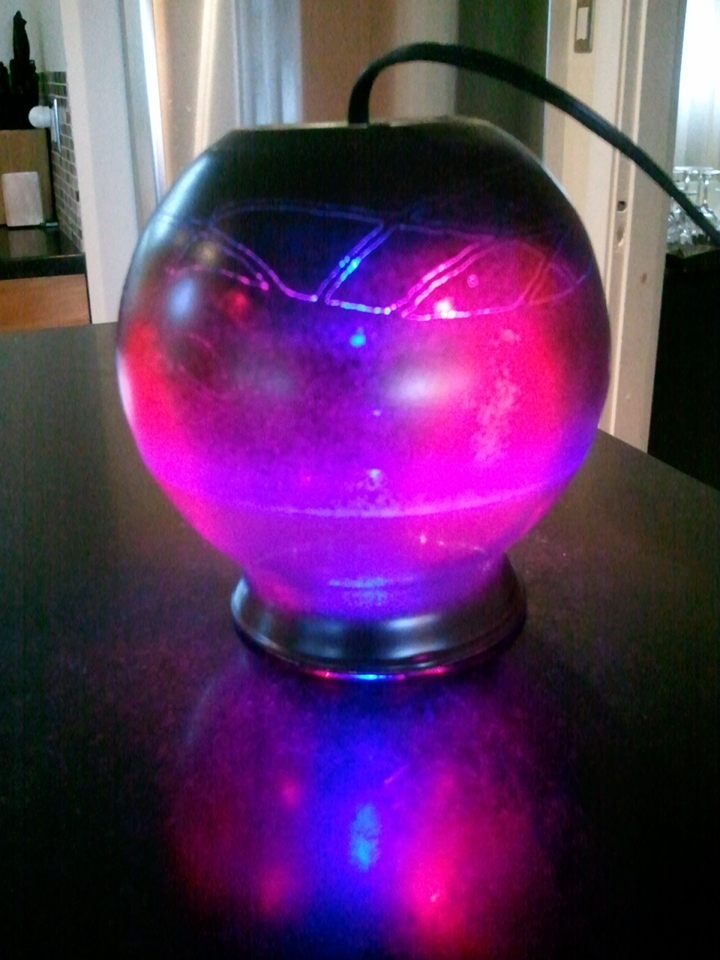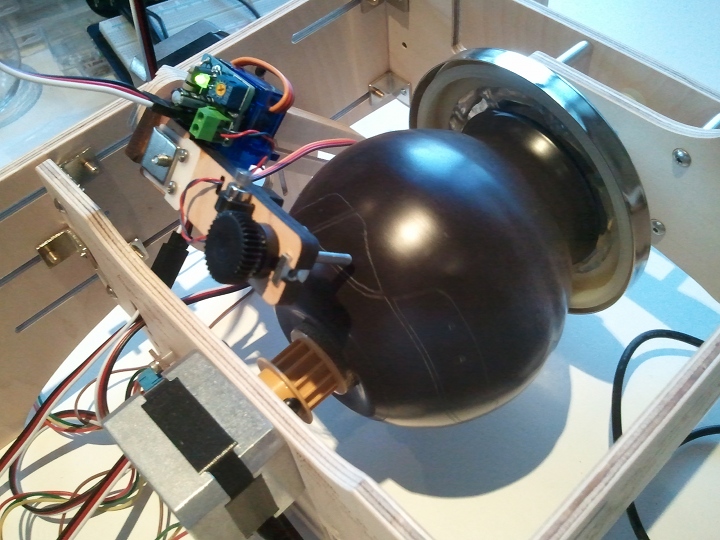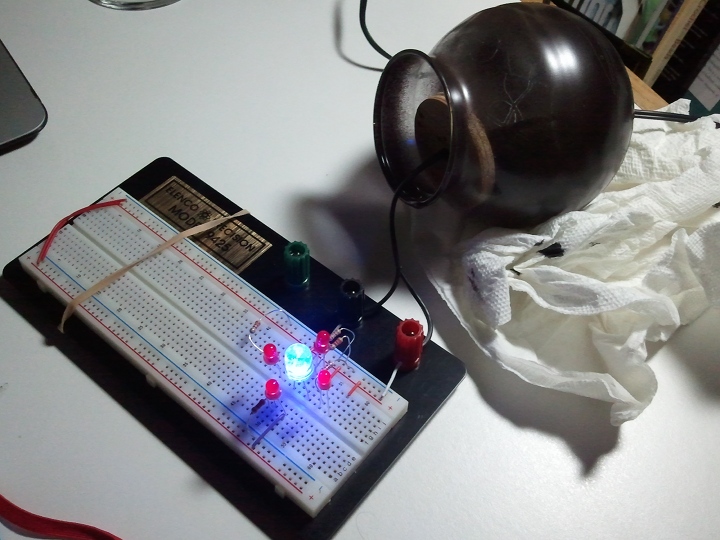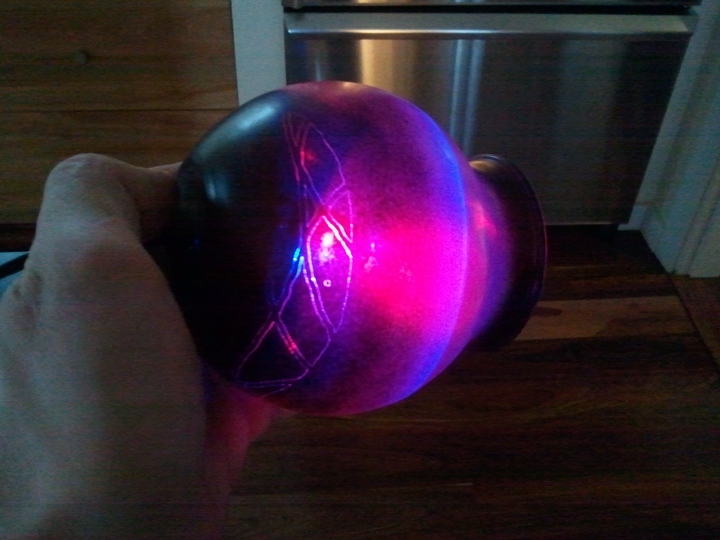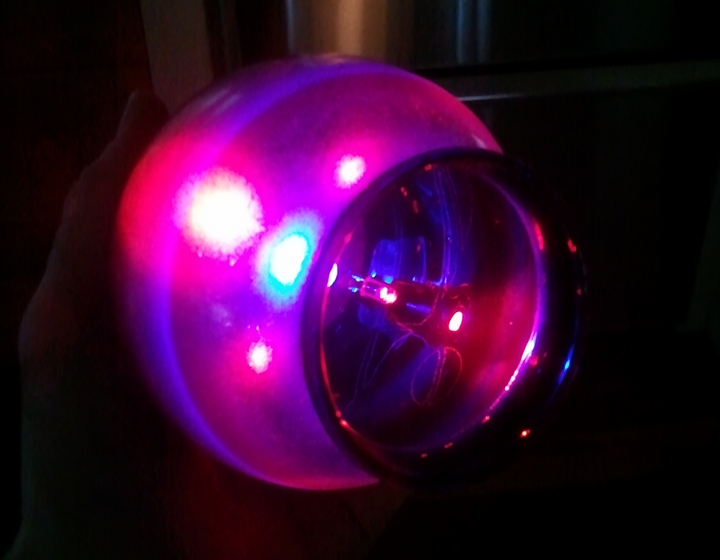Eggbot LED Lamp
I’ve had it in the back of my head for a long time to make some type of lamp with LED’s. And with the arrival of the Ostrich Egg-Bot and its diamond etcher, I had the concept of spray-painting some egg-like object, and etching away a pattern to let light through. Below is my first attempt at such a thing. Did it work out just like I had envisioned? Not quite. But it was a great learning experience, and I’m in a much better place if I decide to do it again.
I started out by purchasing a simple glass vase at the dollar-store, drilling a hole through its base for the power-cord (which was surprisingly hard even with the special ‘glass drillable bits’ I purchased). I spray-painted it matte-black on the bottom, and sort of faded the paint up the side so it’d be more transparent at the top. I designed a simple pattern in Inkscape, which the Ostrich Eggo-bot then etched onto the now-painted glass vase:
Upon completion of that, I selected four LED’s for the inside of of the light: A high-power blue for the middle, and four high-power red’s that would shine out the sides. My hope was the red LED’s would show off the etching. As a mounting platform for the LED’s I cut a round piece of wood from a piece of scrap plywood, then drilled holes in it for the LED leads, and the power-cable. I grabbed an old wall-wart, cut off the end, and threaded it through the hole in the vase and my wood disk. I wired that into a breadboard with appropriate resistors:
Finding success there, I hot-glued the led’s into the wood disk:
From there I started the process of soldering the resistors to the positive leads, twisting all the positive leads together and soldering to the power-cord. I used black electrical tape as a simple barrier between the positive and negative leads when I soldered second:
Plugged it in to make sure it worked….
Pulled the power-cord back into the vase (it was a tight fit, so friction is enough to hold it in place) and had the finished product:
Things learned:
- If I do this again, I’ll put the etching lower on the lamp: It will be easier to see and show-off.
- Need to get LED’s that have a wider angle: These are fairly focused, so don’t diffuse as much in the lamp as I’d like.
- The lines of the etching itself are very thin: I’d find a way to make the etched-away areas larger.
